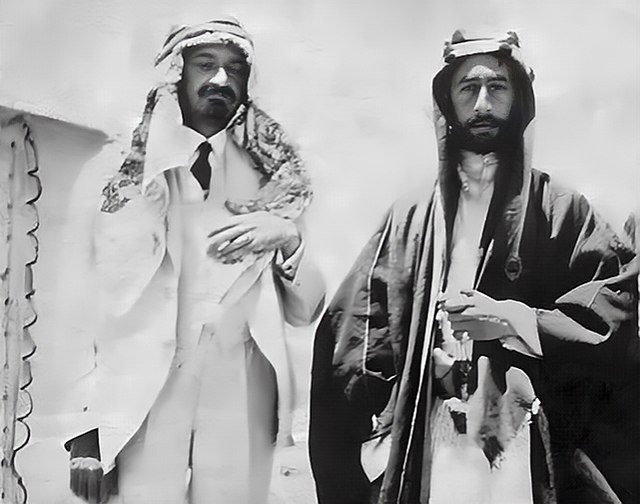
A two-state solution to the Israeli-Palestinian conflict is outdated. A three-state solution is a much better alternative to end the ongoing deadlock. If Egypt absorbs the Gaza Strip and the West Bank becomes part of Jordan again, the Arab world can take matters into its own hands and end the ongoing spiral of violence. They will have peace and stability in their backyard and stop allowing themselves to be dictated to by the West.
By Ken van Ierlant
The Israeli-Palestinian conflict dates back to before 1920. Initially, it was never an Israeli-Palestinian conflict but a Jewish-Arab conflict. The conflict is based on intolerance and ingrained beliefs that non-Muslims cannot govern Muslims.
Once an area is under Muslim rule, it can never again fall into the hands of non-Muslims according to beliefs. With this decree, the Grand Mufti of Jerusalem Amin al-Husseini started a smear campaign against the English and Jewish immigrants in the 1920s.
The Jewish immigrants in the Ottoman-occupied Levant area at the end of the 19th century introduced the Palestinian identity. They used it as a distinguishing identity for the organizations they set up to structure their settlements. Think about the Palestinian Post or the Palestinian Philharmonic.
The synonym for Palestinian was Jew or vice versa. There were only a limited number of them. About 40,000, mostly Ashkenazi Jews, found their way from Shtetle in Tsarist Russia to Palestine, which was under Turkish rule. From 1890 onwards, approximately 3 million Jews emigrated to Western Europe, America, South America, and Australia.
During the same period, there was much greater immigration from the surrounding Arab countries, where primarily Sunni Arabs sought refuge in the Levant to work in Jewish principally companies or agricultural infrastructure. The surrounding Arab countries were poor and exploited by the Turks.
With the arrival of the British in 1917, a new situation arose: the Ottomans, as guardians of Islam, were replaced by a Christian occupier who, in 1920, received a mandate from the World League of Nations (the victors of the First World War).
During the San Remo conference, the British were given “the British Palestinian mandate” for 30 years to organize the area constitutionally.
The British split the British/Palestinian mandate into Trans Jordan and Sid Jordan. According to the Balfour Declaration, two states should be formed in Sid Jordan or present-day Israel, the West Bank, and Gaza: a Jewish state and an Arab state.
The division was 80/20, with the Arabs being allocated the largest area due to a now numerical Arab majority. The Arabs, led by the Grand Mufti of Jerusalem, rejected the proposal and started the first series of Pogroms, which created a religious and ethnic conflict in which the Arabs wanted to deny the Jews their home state for religious and ethnic reasons.
This conflict accelerated after 1936 when the Peel Commission wanted to settle the dispute with a new division. Due to increased Jewish immigration and economic dominance, the ratio became 60/40.
This proposal was categorically rejected by the Arabs, with the Grand Mufti inciting the Arab population to resist the British and the Jews fully. Strikes and a civil war followed in which the Jews organized themselves into resistance groups such as the Hagana, Irgun, Palmach, and the Stern group.
The British ended the Arab rebels and gradually moved to limit Jewish immigration.
The Second World War led to the Grand Mufti making the wrong choice and joining the Nazis to mercilessly murder many Jewish citizens in the Balkans with the support of the Nazis.
After the war, Jewish immigration to Palestine increased exponentially, so a new partition plan gave the numerically increased Jewish population the right to an area of approximately 50/50. This proposal was also unilaterally rejected, and a war between the surrounding Arab countries and the young state of Israel was the result, which Israel won.
Despite the peace treaties with Egypt, Jordan, and, more recently, the Abraham Accords, Iran's influence reached such proportions that jihadist movements such as Hamas, Islamic Jihad, and Hezbollah, tolerated by the Palestinian Authority (PA), continued to increase terror endlessly.
The current Gaza war is a culmination of the “tit for tat” strategy that has led to a full escalation that is setting the entire region on fire and could become a prelude to a much larger conflict that no one wants.
Everyone asks; But what now?
With the EU in its wake, the US Biden administration is still looking forward to a better proposal than a two-state solution despite the failed Oslo agreements. The PA, Hamas, and Islamic Jihad are on a collision course and are still inciting the population, in the tradition of the Grand Mufti, to expel the Jews and destroy the state of Israel.
With these people, realizing a solution or pinning hope on it is no longer possible.
Most Palestinians still reject a two-state solution as a solution to a territorial conflict. This proves it is not a territorial conflict but an ethnic/religious ideological conflict with no prospect of peace.
To get out of this vicious circle, a solution is needed that is supported by the Sunni Arab world in line or succession to the Abraham Accords. The Sunni world knows that Israel is a fait accompli and possibly even a partner for long-term peace and economic prosperity. The enemy of my enemy is ultimately my friend.
Iran is the real enemy and founder of modern jihadism and is disrupting the balance of power in the Middle East. It is Iran that is waging an ideological war against its Sunni opponents, Israel and the West.
A two-state solution based on dividing the current territory is outdated. A three-state solution is a smarter and more feasible alternative in which the Arab countries can take the lead in ending the fight.
By definition, Arabs solve their problems disproportionately, are less bothered by moral convictions, and can explain to the Palestinians in the language of the street that their dream of their state instead of Israel is an illusion that will be destroyed forever and ever. It must be pressed.
The Arab countries are increasingly recognizing that Iran is the bishop on the chessboard with numerous proxy pawns that are pushing the Sunni world and Israel into a corner, which is starting to be detrimental to the interests of the same Sunni Arab world.
A solution that provides a leading operational role for Egypt and Jordan in both Gaza and the West Bank must be found. Egypt created Gaza in 1948, and most of the population is Egyptian and Saudi by origin, mainly from their surnames.
Jordan created the West Bank in 1948, and most of its population is ethnically the same as the West Bank's. Jordan has a supervisory role on the Temple Mount through the Waqf, an agreement that Moshe Dayan made with King Hussein in 1967 to prevent disagreements over the administration of religious places. De facto, East Jerusalem is, therefore, mainly in Arab hands.
Suppose Saudi Arabia and the UAE can lead in financing this three-state solution, enforced by an administrative presence of Egypt and Jordan. I foresee a light in the tunnel to settle this conflict.
The Americans and the EU can only support this solution to implement a Western/Sunni hegemony as previously conceived by the king of Saudi Arabia in 1917. A pan-Arab world led by Saudi Arabia with the UAE, Qatar, etc., in its wake is the only guarantee of an enforced and firmly guided long-term peace.
In 1917, King Faisal of Saudi Arabia made a deal with the then-Zionist leader and first President of Israel, Chaim Weizmann, to allow a Jewish state in Palestine upon the establishment of a pan-Arab state.
However, nothing came of this at the time because the British did not keep their word to the king of Saudi Arabia. Subsequently, they seized the area through the Sykes/Picot treaty and divided it among themselves and the French. It took over 100 years and many victims to restore this anomaly and the colonial world of that time.
In light of the past, it is now time for the Arabs and Israelis to follow in the footsteps of King Faisal and President Chaim Weizmann to solve their problems and show leadership by making the Abraham Accords leading and placing the Western powers at a distance and drive Iran back into its cage.
The Palestinians have, as Aba Eban, Israel's foreign minister, once said, “The Palestinians never missed a chance to miss a chance.” The current Palestinian leadership is unable, after the failure of Camp David in 2000, to enforce its state.
The Palestinians are divided and have become a plaything of Iran and can no longer jump over their shadow to reach peace with Israel. After the pogrom of October 7, they have definitively thrown away their moral responsibility by collaborating more openly with Iran.
It is now time for a pan-Arab initiative to achieve a three-state solution, as the King of Saudi Arabia envisioned in 1917.






